R.J. Stowell's Blog: rjsomeone, page 7
May 15, 2021
The L.A. Punk Scene
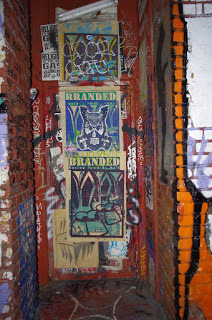 Al's BarTurn back the clock to the early '80s and find a different L.A. The city was a hostile environment back then. The optimism of the '50s and '60s had faded. Gang culture and drug violence were on the rise; the homicide rate nearly doubling (rising from 12.5 per 100,000 to 23.0) in a few short years. The now tourist friendly Hollywood Blvd. was known at the time as a destination for drugs, sex shops, runaways and prostitution. It wasn't "White Riot" London, but L.A. was ready for punk. Just as New York had CBGBs, a whole underground rock culture existed in Los Angeles, a culture that defined itself in opposition to the vanilla bland of the music industry. Bands such as the the Germs, the Weirdos, the Dickies, the Go-Gos, Wasted Youth, Fear, X, Black Flag and the Circle Jerks were all part of a vibrant new scene. With little exception, it wasn't my scene, but at the end of the evening, punk and new wave, and to some degree, heavy metal, congregated at Canter's Deli on Fairfax, like it was sanctuary. Despite a penchant for hot pastrami on rye, you'd usually find me instead at Ben Frank's or Barney's Beanery, but Kenya and Cathy liked Canter's, and when Laura was along, you could bet I'd be there too. More:
Al's BarTurn back the clock to the early '80s and find a different L.A. The city was a hostile environment back then. The optimism of the '50s and '60s had faded. Gang culture and drug violence were on the rise; the homicide rate nearly doubling (rising from 12.5 per 100,000 to 23.0) in a few short years. The now tourist friendly Hollywood Blvd. was known at the time as a destination for drugs, sex shops, runaways and prostitution. It wasn't "White Riot" London, but L.A. was ready for punk. Just as New York had CBGBs, a whole underground rock culture existed in Los Angeles, a culture that defined itself in opposition to the vanilla bland of the music industry. Bands such as the the Germs, the Weirdos, the Dickies, the Go-Gos, Wasted Youth, Fear, X, Black Flag and the Circle Jerks were all part of a vibrant new scene. With little exception, it wasn't my scene, but at the end of the evening, punk and new wave, and to some degree, heavy metal, congregated at Canter's Deli on Fairfax, like it was sanctuary. Despite a penchant for hot pastrami on rye, you'd usually find me instead at Ben Frank's or Barney's Beanery, but Kenya and Cathy liked Canter's, and when Laura was along, you could bet I'd be there too. More:Al’s Bar (Hewitt Street and Traction Avenue, 90013) — Located on the ground floor of the American Hotel, Los Angeles' oldest punk venue, closed in 2001. (Meat Puppets, Sonic Youth, Misfits.)
 Anti-Club (At Helen's Place: 4658 Melrose Ave, 90004) — Eclectic venue opened in 1979 that was originally booked by Russell Jessum, Jack Marquette and Jim Van Tyne. In the mid-80s the Anti-Club moved downtown to Eddy's Burritos under different stewardship. (Descendants, Fear, Angry Samoans.)
Anti-Club (At Helen's Place: 4658 Melrose Ave, 90004) — Eclectic venue opened in 1979 that was originally booked by Russell Jessum, Jack Marquette and Jim Van Tyne. In the mid-80s the Anti-Club moved downtown to Eddy's Burritos under different stewardship. (Descendants, Fear, Angry Samoans.)The Arena (11445 Jefferson Boulevard, 90230) — This place was once part of the Jefferson Arena Bowling complex and was home to punk rock shows in 1980. Now a mini-mall. (Plugz, The Toasters, The Go-Go's.)Atomic Cafe (E. 1st Street and S. Alameda, 90012) — Noodle shop in Little Tokyo that was open until 4am. Nancy, the daughter of the owners, loved punk rock and was successful in bringing in that crowd, including luminaries like Blondie and the Ramones. Closed in 1989.
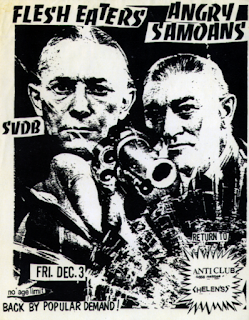 The Anti ClubBlackies (607 N. La Brea, 90036) — Opened in 1979, this smaller club was only around for 9 months. (Bates Motel, The Dickies, Germs.)Brave Dog (438 E 1st St., 90012) — Located near the Atomic Cafe, this underground punk club run by Jack Marquette was open from 1980 to 1982. (Black Flag, Bad Brains, Social Distortion.) Canter's Deli (419 N. Fairfax Avenue 90048) — This Jewish deli somehow managed to be a rock 'n' roll meeting place, a trend that continues today. Cathay de Grande (1600 N. Argyle Avenue, 90028) — Chinese restaurant in Hollywood that in 1980 turned punk when Fred Paterson began DJing and booking bands here. Closed in 1985. (Traitors, Fuck Ups, and famous for "Six Bands - One Buck.")Club 88 (11784 Pico Boulevard, 90064) — After opening in 1977, this club featured a ton of unsigned bands (including Ah-Ga-Oo, a talentless combo that featured former members of Ella and the Blacks; for two weeks in 1980, I sang back-up vocals). Closed in 1981.Club Lingerie (6507 Sunset Boulevard, 90028) — This place has been open under various names since the late 1940s. After the Masque clubs closed, Brendan Mullen booked bands here until 1991. Now this nightclub goes by "Club L." (Bad Religion, TSOL.)Hong Kong Cafe (425 Gin Ling Way 90012) — Club near Madame Wong's that followed down the punk road and became a competitor; the Hong Kong stayed more punk rock and less New Wave. Closed in 1981. (Circle Jerks, Black Flag.)
The Anti ClubBlackies (607 N. La Brea, 90036) — Opened in 1979, this smaller club was only around for 9 months. (Bates Motel, The Dickies, Germs.)Brave Dog (438 E 1st St., 90012) — Located near the Atomic Cafe, this underground punk club run by Jack Marquette was open from 1980 to 1982. (Black Flag, Bad Brains, Social Distortion.) Canter's Deli (419 N. Fairfax Avenue 90048) — This Jewish deli somehow managed to be a rock 'n' roll meeting place, a trend that continues today. Cathay de Grande (1600 N. Argyle Avenue, 90028) — Chinese restaurant in Hollywood that in 1980 turned punk when Fred Paterson began DJing and booking bands here. Closed in 1985. (Traitors, Fuck Ups, and famous for "Six Bands - One Buck.")Club 88 (11784 Pico Boulevard, 90064) — After opening in 1977, this club featured a ton of unsigned bands (including Ah-Ga-Oo, a talentless combo that featured former members of Ella and the Blacks; for two weeks in 1980, I sang back-up vocals). Closed in 1981.Club Lingerie (6507 Sunset Boulevard, 90028) — This place has been open under various names since the late 1940s. After the Masque clubs closed, Brendan Mullen booked bands here until 1991. Now this nightclub goes by "Club L." (Bad Religion, TSOL.)Hong Kong Cafe (425 Gin Ling Way 90012) — Club near Madame Wong's that followed down the punk road and became a competitor; the Hong Kong stayed more punk rock and less New Wave. Closed in 1981. (Circle Jerks, Black Flag.)
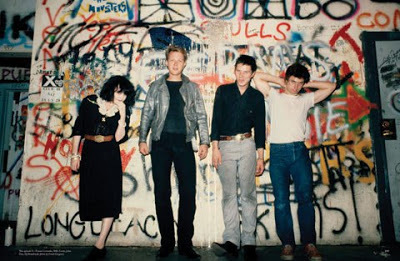 X at the MasqueThe Masque (1655 N. Cherokee, 90028) — Between 1977 and 1979 Brendan Mullen’s basement space was central to the punk scene. After the original Masque was shut-down, Mullen hosted shows at the “Other Masque” (6314 Santa Monica Boulevard, 90038) and then at Club Lingerie. (X, Dickies, Weirdos.) Oki-Dog (Santa Monica Boulevard and N. Vista St., 90046) — Late night staple. Danny's Oki-Dog was a hot dog with chili and pastrami wrapped up like a burrito, and along with a sack of greasy skin on potato wedges, this was hangover food like no one else could do.Tropicana Motel (8585 Santa Monica Boulevard, 90069) — Ground zero for a lot of party action back in the day, from Tom and Rickie to The Dickies. Duke's Coffee Shop was also a hot spot diner. Duke's ended up moving to the Sunset Strip; the motel was torn down in 1988.
X at the MasqueThe Masque (1655 N. Cherokee, 90028) — Between 1977 and 1979 Brendan Mullen’s basement space was central to the punk scene. After the original Masque was shut-down, Mullen hosted shows at the “Other Masque” (6314 Santa Monica Boulevard, 90038) and then at Club Lingerie. (X, Dickies, Weirdos.) Oki-Dog (Santa Monica Boulevard and N. Vista St., 90046) — Late night staple. Danny's Oki-Dog was a hot dog with chili and pastrami wrapped up like a burrito, and along with a sack of greasy skin on potato wedges, this was hangover food like no one else could do.Tropicana Motel (8585 Santa Monica Boulevard, 90069) — Ground zero for a lot of party action back in the day, from Tom and Rickie to The Dickies. Duke's Coffee Shop was also a hot spot diner. Duke's ended up moving to the Sunset Strip; the motel was torn down in 1988.
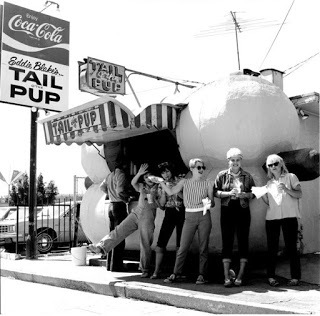 The Go-Go's at Tail of the PupThe Starwood (8151 Santa Monica Boulevard, 90069) — This was one of the major Hollywood clubs and a music industry showcase spot (the other major clubs included the Whiskey, the Troubadour, Gazarri’s, and the Roxy). The Starwood was the first of the big clubs to feature punk and heavy metal acts. Zero Club (1957 N. Cahuenga Boulevard 90068) — Also called Zero Zero. Underground art gallery/after-hours venue open from 1980-85.
The Go-Go's at Tail of the PupThe Starwood (8151 Santa Monica Boulevard, 90069) — This was one of the major Hollywood clubs and a music industry showcase spot (the other major clubs included the Whiskey, the Troubadour, Gazarri’s, and the Roxy). The Starwood was the first of the big clubs to feature punk and heavy metal acts. Zero Club (1957 N. Cahuenga Boulevard 90068) — Also called Zero Zero. Underground art gallery/after-hours venue open from 1980-85.Many nights you'd find me at the Seven Seas across from, what was then, Mann's Chinese Theater (nee Grauman's). It wasn't a venue for bands, but was peopled with teen-aged girls, announced last call at 1:45, and stayed open till 4. Loved that place.
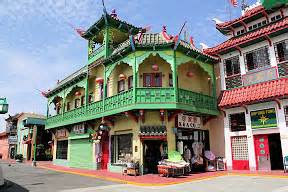 Sunday nights, though, was all about: Madame Wong's (949 Sun Mun Way, 90012) — This spot in Chinatown was briefly booked by well-known promoter Paul Greenstein; later proprietor, Esther Wong (the Dragon Lady), steered the place in a New Wave direction. Closed in 1985, but what a run.Born in Shanghai in 1917, Madame (Esther) Wong immigrated to the United States in 1949. In the 1970s and ‘80s, she owned two restaurants/clubs—Madame Wong's in Chinatown and Madame Wong's West in Santa Monica—that became the beacon for some of the greatest punk and new wave bands of the era, the most famous among them The Mystic Knights of the Oingo Boingo, The Police and, after my time, The Red Hot Chili Peppers.
Sunday nights, though, was all about: Madame Wong's (949 Sun Mun Way, 90012) — This spot in Chinatown was briefly booked by well-known promoter Paul Greenstein; later proprietor, Esther Wong (the Dragon Lady), steered the place in a New Wave direction. Closed in 1985, but what a run.Born in Shanghai in 1917, Madame (Esther) Wong immigrated to the United States in 1949. In the 1970s and ‘80s, she owned two restaurants/clubs—Madame Wong's in Chinatown and Madame Wong's West in Santa Monica—that became the beacon for some of the greatest punk and new wave bands of the era, the most famous among them The Mystic Knights of the Oingo Boingo, The Police and, after my time, The Red Hot Chili Peppers. 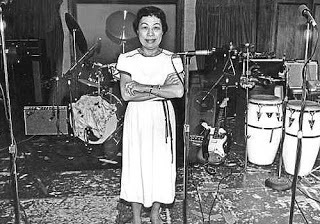 Wong was in her 60s and looked like your typical Chinese grandmother and nothing at all like the woman who would, in many ways, revolutionize rock 'n' roll. When the Polynesian bands she booked were no longer bringing in customers, she turned to rock acts, saw her business take off and a legend was born. Despite the outwardly kind demeanor, Wong scared the shit out of everyone. She'd walk around the club and if she smelled marijuana, she'd grab you by the ear and drag you out like you were one of her kids. Rumor has it (and I believe it) she made the Ramones clean up the graffiti they painted in her restroom before allowing them to play, and they did. She was tough as nails and you didn't want to be on the receiving end of her wrath. I saw her once grab an Asian kid like a steroid addled bouncer, toss him out on the sidewalk and say, "Aren’t you ashamed? A nice Chinese boy should be at home studying, not carrying on like a low-life!" How could you not miss that? Yeah, the good ole days.
Wong was in her 60s and looked like your typical Chinese grandmother and nothing at all like the woman who would, in many ways, revolutionize rock 'n' roll. When the Polynesian bands she booked were no longer bringing in customers, she turned to rock acts, saw her business take off and a legend was born. Despite the outwardly kind demeanor, Wong scared the shit out of everyone. She'd walk around the club and if she smelled marijuana, she'd grab you by the ear and drag you out like you were one of her kids. Rumor has it (and I believe it) she made the Ramones clean up the graffiti they painted in her restroom before allowing them to play, and they did. She was tough as nails and you didn't want to be on the receiving end of her wrath. I saw her once grab an Asian kid like a steroid addled bouncer, toss him out on the sidewalk and say, "Aren’t you ashamed? A nice Chinese boy should be at home studying, not carrying on like a low-life!" How could you not miss that? Yeah, the good ole days.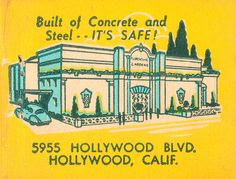 Other venues: The Music Machine on Pico, so many good shows: The Cult, James White & The Blacks, Red Hot Chili Peppers. Seems so long ago (because it was). Radion, across the street for food! New Year's Eve 1985; do you remember? The Starwood - so long ago, like a dream. Rodney spinning records. Wall of Voodoo, the Mau Maus, Human Hands, Black Flag, Geza X. Just fun to be there. Drink your Mickey's Big Mouth in the parking lot. The Whiskey - Like the time in March '84 when Jello Biafra jumped on my head from the stage during a DK show. Nice guy; said, "Sorry." Club Lingerie - Don't remember that night, only there once. The Lhasa on Hudson off Santa Monica Blvd. No alcohol, no one seemed to mind. Artsy shows, like the nude string quartet that backed Lena Lovich. Scream - at that place on Highland, whatever it was called. Oh, to be young, cute and drunk on a Monday night in the 80s. Anti-Club - before that witch Helen took over in '86. Cheap beer, cheap shows, and cheap.... The [Hollywood] Palace - big shows there...Gang of Four, the Pogues, etc. The Hollywood Palladium - still there, of course, but not the same. Too polished now. Were you there for The Smiths? I was. And the Clash in '82? Talking Heads, U2 - met Kenya, Kyra (remember San Fran, guys? Crazy). The New Florentine Gardens - New Order, The Professionals. Lotsa teens, bright 80s colors. Cathay de Grande - lotsa nights there: Gun Club, Kommunity FK, etc. What's not to like? There was a New Romantic club there in early '81, can't remember the name. Seven Seas - known as the Seven Sleaze, Hollywood Blvd. - the place to pick up teen-age girls; order as many drinks as you want at ten minutes to two, stayed open till 3. The Continental - across from the Capitol Records tower - new wave DJ in an old Hollywood dive, women at the bar left over from '63; open till 4, if you slept in the car, breakfast at the Tick Tock across the street. The Firefly on Hollywood Blvd., just a dream now - like so many.
Other venues: The Music Machine on Pico, so many good shows: The Cult, James White & The Blacks, Red Hot Chili Peppers. Seems so long ago (because it was). Radion, across the street for food! New Year's Eve 1985; do you remember? The Starwood - so long ago, like a dream. Rodney spinning records. Wall of Voodoo, the Mau Maus, Human Hands, Black Flag, Geza X. Just fun to be there. Drink your Mickey's Big Mouth in the parking lot. The Whiskey - Like the time in March '84 when Jello Biafra jumped on my head from the stage during a DK show. Nice guy; said, "Sorry." Club Lingerie - Don't remember that night, only there once. The Lhasa on Hudson off Santa Monica Blvd. No alcohol, no one seemed to mind. Artsy shows, like the nude string quartet that backed Lena Lovich. Scream - at that place on Highland, whatever it was called. Oh, to be young, cute and drunk on a Monday night in the 80s. Anti-Club - before that witch Helen took over in '86. Cheap beer, cheap shows, and cheap.... The [Hollywood] Palace - big shows there...Gang of Four, the Pogues, etc. The Hollywood Palladium - still there, of course, but not the same. Too polished now. Were you there for The Smiths? I was. And the Clash in '82? Talking Heads, U2 - met Kenya, Kyra (remember San Fran, guys? Crazy). The New Florentine Gardens - New Order, The Professionals. Lotsa teens, bright 80s colors. Cathay de Grande - lotsa nights there: Gun Club, Kommunity FK, etc. What's not to like? There was a New Romantic club there in early '81, can't remember the name. Seven Seas - known as the Seven Sleaze, Hollywood Blvd. - the place to pick up teen-age girls; order as many drinks as you want at ten minutes to two, stayed open till 3. The Continental - across from the Capitol Records tower - new wave DJ in an old Hollywood dive, women at the bar left over from '63; open till 4, if you slept in the car, breakfast at the Tick Tock across the street. The Firefly on Hollywood Blvd., just a dream now - like so many.A plea: When I do my research I am constantly at a loss for photos. I own virtually none of the photographs I post, but as a not for profit venture, I have few qualms about my copyright infringement; still I find it distressing that so little photojournalism exists for the era, ho-hum. If you know me, knew me, remember me, hate me, blew me, avoided me, what-evered me, and you have photos you'd like to share, email me. Thanks.
Published on May 15, 2021 07:13
May 13, 2021
I Threw a Brick Through a Window - U2
[image error]
Hollywood has always been seedy, like a pretty girl with dirty underwear. Bukowski said it "was a sickness: this great interest in a medium that relentlessly and consistently failed, time after time after time, to produce anything at all. People became so used to seeing shit on film that they no longer realized it was shit." And by the 80s, any glamour associated with a Hollywood past was inaccessible; Musso and Frank's and the Egyptian sat behind a bulwark of drug-addled homelessness.
November 28, 1981: the Hollywood Palladium, a venue that had seen the likes of Frank Sinatra and Tommy Dorsey, was dirty and rank. We were on the list: U2 with Romeo Void. October was more subdued than Boy and it showed in the solemnity of the audience. Bono didn’t surf the crowd, he floated above it like Arthur in the days of the Knights. Just 12 songs in the set: Gloria, "Another Time, Another Place," "I Threw a Brick Through a Window." We met Kathy and Kyra, like guests at one of Gatsby’s parties, way too high. "We wanted to see them in San Francisco tomorrow night." "We’ll go." Backstage we watched from the wings "A Day Without Me," "Rejoice," "The Cry," "Send in the [f-in!] Clowns," crazy. Made out with Kathy in the Ladies Room on a ripped settee, missed "Stories for Boys" and "I Will Follow;" came back to "Twilight" and "Out of Control," no encore.
 At the afterparty we talked to The Edge, Robbie'd talk to anyone, but I closed the deal by gushing on his way-rad harmonics (it was the 80s), that distinguished U2 sound. He said he'd put us on the list in Frisco. We bought a case of Mickey's Big Mouth, stole two-hundred dollars from a jar on a counter at Kathy's house, sneaking around in the dark. She was a good girl (otherwise). She left a note. "Going to San Fran with some boys we met." Straight line, I5 at 2am to San Fran, not one of us should have been behind the wheel. A case of Mickey's, a pitch black sky, a million stars, driving with the lights off. Motel room. Slept it off. TV on. Natalie Wood died, story on the news. Kathy sat straight up in bed: "My favorite actress just died." She cried. I hadn't met her 24 hours ago, but we'd slept in the same bed, and now there was substance; hell yeah, dumb luck, Natalie Wood just had to die mysteriously. "I'm sorry." I kissed her on the forehead.
At the afterparty we talked to The Edge, Robbie'd talk to anyone, but I closed the deal by gushing on his way-rad harmonics (it was the 80s), that distinguished U2 sound. He said he'd put us on the list in Frisco. We bought a case of Mickey's Big Mouth, stole two-hundred dollars from a jar on a counter at Kathy's house, sneaking around in the dark. She was a good girl (otherwise). She left a note. "Going to San Fran with some boys we met." Straight line, I5 at 2am to San Fran, not one of us should have been behind the wheel. A case of Mickey's, a pitch black sky, a million stars, driving with the lights off. Motel room. Slept it off. TV on. Natalie Wood died, story on the news. Kathy sat straight up in bed: "My favorite actress just died." She cried. I hadn't met her 24 hours ago, but we'd slept in the same bed, and now there was substance; hell yeah, dumb luck, Natalie Wood just had to die mysteriously. "I'm sorry." I kissed her on the forehead.
 Peter Aliotos for French Dip, cable car roundabout, touristy shit, up to Market, the Warfield. Same set. Back stage, Bono handed Kathy his bomber jacket during "Rejoice." Robbie said, "Keep it, Kathy." "I can’t, it's Bono's." Three song encore, brilliant: "Fire," "11 O'Clock Tick Tock," "The Ocean."
Peter Aliotos for French Dip, cable car roundabout, touristy shit, up to Market, the Warfield. Same set. Back stage, Bono handed Kathy his bomber jacket during "Rejoice." Robbie said, "Keep it, Kathy." "I can’t, it's Bono's." Three song encore, brilliant: "Fire," "11 O'Clock Tick Tock," "The Ocean."
Drove home on 101 through the onion fields, plowed under for the winter, but the smell was pungent, an odor you could taste. Stopped at Pea Soup Andersen's in Solvang. It's what you did when you went to Solvang. We sat at a booth. Next to us they sat a woman with a handicapped son in an electric chair. We were eating our soup and the woman in the next booth was spooning unsuccessful green spoonfuls of pea soup into the boy's mouth and it would froth and drip into a bib with a pocket and spray across the tabletop. "I can't watch this," Kathy said. She couldn't eat. I didn't know what to think of her. Was she disgusted; was she sorrowful? A lot rested on her reaction.
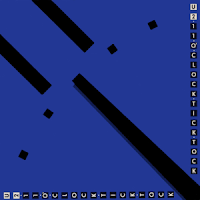 "Did you see the frustration on that woman's face? She tries so hard, so futilely. No reward." She got into the car and slipped the U2 cassette into the player, "11 O'Clock Tick Tock," and she sang in a little voice like a pixie's. She knew all the words.
"Did you see the frustration on that woman's face? She tries so hard, so futilely. No reward." She got into the car and slipped the U2 cassette into the player, "11 O'Clock Tick Tock," and she sang in a little voice like a pixie's. She knew all the words.
"I love U2," she said, but I misunderstood her.
I said, "I love you, too, Kathy."
November 28, 1981: the Hollywood Palladium, a venue that had seen the likes of Frank Sinatra and Tommy Dorsey, was dirty and rank. We were on the list: U2 with Romeo Void. October was more subdued than Boy and it showed in the solemnity of the audience. Bono didn’t surf the crowd, he floated above it like Arthur in the days of the Knights. Just 12 songs in the set: Gloria, "Another Time, Another Place," "I Threw a Brick Through a Window." We met Kathy and Kyra, like guests at one of Gatsby’s parties, way too high. "We wanted to see them in San Francisco tomorrow night." "We’ll go." Backstage we watched from the wings "A Day Without Me," "Rejoice," "The Cry," "Send in the [f-in!] Clowns," crazy. Made out with Kathy in the Ladies Room on a ripped settee, missed "Stories for Boys" and "I Will Follow;" came back to "Twilight" and "Out of Control," no encore.
 At the afterparty we talked to The Edge, Robbie'd talk to anyone, but I closed the deal by gushing on his way-rad harmonics (it was the 80s), that distinguished U2 sound. He said he'd put us on the list in Frisco. We bought a case of Mickey's Big Mouth, stole two-hundred dollars from a jar on a counter at Kathy's house, sneaking around in the dark. She was a good girl (otherwise). She left a note. "Going to San Fran with some boys we met." Straight line, I5 at 2am to San Fran, not one of us should have been behind the wheel. A case of Mickey's, a pitch black sky, a million stars, driving with the lights off. Motel room. Slept it off. TV on. Natalie Wood died, story on the news. Kathy sat straight up in bed: "My favorite actress just died." She cried. I hadn't met her 24 hours ago, but we'd slept in the same bed, and now there was substance; hell yeah, dumb luck, Natalie Wood just had to die mysteriously. "I'm sorry." I kissed her on the forehead.
At the afterparty we talked to The Edge, Robbie'd talk to anyone, but I closed the deal by gushing on his way-rad harmonics (it was the 80s), that distinguished U2 sound. He said he'd put us on the list in Frisco. We bought a case of Mickey's Big Mouth, stole two-hundred dollars from a jar on a counter at Kathy's house, sneaking around in the dark. She was a good girl (otherwise). She left a note. "Going to San Fran with some boys we met." Straight line, I5 at 2am to San Fran, not one of us should have been behind the wheel. A case of Mickey's, a pitch black sky, a million stars, driving with the lights off. Motel room. Slept it off. TV on. Natalie Wood died, story on the news. Kathy sat straight up in bed: "My favorite actress just died." She cried. I hadn't met her 24 hours ago, but we'd slept in the same bed, and now there was substance; hell yeah, dumb luck, Natalie Wood just had to die mysteriously. "I'm sorry." I kissed her on the forehead. Peter Aliotos for French Dip, cable car roundabout, touristy shit, up to Market, the Warfield. Same set. Back stage, Bono handed Kathy his bomber jacket during "Rejoice." Robbie said, "Keep it, Kathy." "I can’t, it's Bono's." Three song encore, brilliant: "Fire," "11 O'Clock Tick Tock," "The Ocean."
Peter Aliotos for French Dip, cable car roundabout, touristy shit, up to Market, the Warfield. Same set. Back stage, Bono handed Kathy his bomber jacket during "Rejoice." Robbie said, "Keep it, Kathy." "I can’t, it's Bono's." Three song encore, brilliant: "Fire," "11 O'Clock Tick Tock," "The Ocean." Drove home on 101 through the onion fields, plowed under for the winter, but the smell was pungent, an odor you could taste. Stopped at Pea Soup Andersen's in Solvang. It's what you did when you went to Solvang. We sat at a booth. Next to us they sat a woman with a handicapped son in an electric chair. We were eating our soup and the woman in the next booth was spooning unsuccessful green spoonfuls of pea soup into the boy's mouth and it would froth and drip into a bib with a pocket and spray across the tabletop. "I can't watch this," Kathy said. She couldn't eat. I didn't know what to think of her. Was she disgusted; was she sorrowful? A lot rested on her reaction.
 "Did you see the frustration on that woman's face? She tries so hard, so futilely. No reward." She got into the car and slipped the U2 cassette into the player, "11 O'Clock Tick Tock," and she sang in a little voice like a pixie's. She knew all the words.
"Did you see the frustration on that woman's face? She tries so hard, so futilely. No reward." She got into the car and slipped the U2 cassette into the player, "11 O'Clock Tick Tock," and she sang in a little voice like a pixie's. She knew all the words."I love U2," she said, but I misunderstood her.
I said, "I love you, too, Kathy."
Published on May 13, 2021 05:04
The O.N. Klub - Mods in L.A.
 We'd sit under the bridge and knock down a case of Mickey's Big Mouth; rich kids from the Valley out of place in East L.A. 1982. The L.A. mod scene, based on the popularity of 2-Tone in England and L.A.'s own Untouchables, had invaded a rough and ramshackle beer bar that hadn't served anyone but locals for twenty years, and few of them. Suddenly it was hundreds of L.A. mods, kids with scooters, kids there to fight, sex in the bathroom, dirty walls - call it what it you will, but it was alive. It was Motown and Gordy; it was The Who; it was The Jam; it was The Untouchables. The Oriental Nights was now the ON Klub.
We'd sit under the bridge and knock down a case of Mickey's Big Mouth; rich kids from the Valley out of place in East L.A. 1982. The L.A. mod scene, based on the popularity of 2-Tone in England and L.A.'s own Untouchables, had invaded a rough and ramshackle beer bar that hadn't served anyone but locals for twenty years, and few of them. Suddenly it was hundreds of L.A. mods, kids with scooters, kids there to fight, sex in the bathroom, dirty walls - call it what it you will, but it was alive. It was Motown and Gordy; it was The Who; it was The Jam; it was The Untouchables. The Oriental Nights was now the ON Klub.Several years ago I came across an article by Kevin Long (The Untouchables). Here's an abbreviated repost:
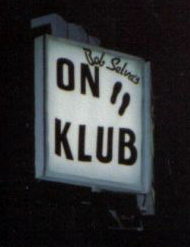 Epicenter of a Scene
Epicenter of a Scene
By Kevin Long
In the early 1980s, on a less than glittering strip of Sunset Boulevard, was a tiny and unremarkable dive called the O.N. Klub. The O.N. Klub, or simply “the ON” to its habitues, was located at 3037 W. Sunset in Silver Lake, then a down-at-the-heel commercial and residential area located just east of Hollywood.
It was at the O.N. Klub that the spark of a brief, but magical, alternative music scene first caught fire in 1980. The scene was an odd amalgamation of sorts, combining the sound and style of 1960’s swinging London with the music of original and second-wave Jamaican and English ska, the dance-able grooves of American Sixties soul and R&B, while tapping into the DIY spirit and independence of late Seventies punk rock.
Unlike punk rock, however, this scene made no claims of political or social upheaval; revolution was not on the agenda. Nevertheless, it was not entirely apolitical either, for if this music scene had a manifesto it was simply one of inclusion, where African-American kids dressed as sharply as their Latino brethren, where Asian-American girls were as coolly detached as their white sisters, where kids from South Central and La Cãnada amicably (and endlessly) debated the merits of Vespa v. Lambretta, not unlike white English boys did half-a-world away and a generation earlier.This was the colorful and wildly popular L.A. mod scene, circa 1980-1984. It all began at a dingy little club in a once dingy corner of the city.
The pivotal moment in the rise of the L.A. punk scene occurred in 1977 when the legendary Masque club first opened its doors. In L.A., bands such as X, the Dickies, the Germs, the Weirdos, the Go-Go’s and others found a home at the Masque, and the local punk scene was underway.
In L.A., the mod scene developed with the ’79 release of “Quadrophenia” kick-starting mod awareness, though it would take another year before mods began to have even minimal presence in local clubs. L.A. mods wore suits in tribute to the early ‘60s American soul stars they idolized. But a suit also looked sharp on the dance floor, and that never hurt when looking to meet someone. Ask any scooter-less, suit-wearing mod what it was like, for example, to board a bus in L.A. in 1980, and he would likely equate it to being viewed as a visitor from a distant galaxy. RTD bus driver to self: “Three old ladies sitting up front? Check. Leather-clad punk with purple Mohawk and bike chain? Check. Pimply-faced metal dude with big hair and small brain? Check. Clean cut teenager wearing ‘60s suit and tie? Che…what the…? Not on my watch, mister!” And in a cloud of diesel, clang, clang, go the RTD doors. Strange days, indeed.
By 1981, the ON Klub had survived its first year. The next influential step occurred when [The O.N. Klub] booked on a regular basis the Boxboys, the first genuinely homegrown L.A. ska band. The Boxboys were the DIY bridge that spanned that vast and mythical chasm between dance floor and stage for L.A.’s first mod band, the Untouchables. The Boxboys influence on the Untouchables exceeded that of the far-removed English Two-Tone and mod sets the group admired; whereas the English bands gave shape to the dream, the Boxboys embodied it.
The Untouchables were mods who made no apologies for their love of Sixties American soul and British power pop in an era where, at least on the L.A. alternative scene, hardcore punk (i.e., testosterone-driven SST bands) was all the rage. It wasn’t just that the Untouchables played a mix of music inspired by black and white artists, but rather that the band itself was racially diverse.
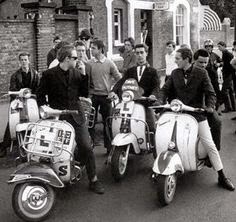 It didn’t take long for word to get out about the band or the club. Soon the Untouchables’ several Vespas and Lambrettas parked out front were joined by dozens of others. All corners of the city were represented on the dance floor in a crazy quilt of culture, color and style.
It didn’t take long for word to get out about the band or the club. Soon the Untouchables’ several Vespas and Lambrettas parked out front were joined by dozens of others. All corners of the city were represented on the dance floor in a crazy quilt of culture, color and style.Before long the mod scene at the ON Klub took on a life of its own. Scooters were regularly lined up nearly the length of the block in front of the club, which got the attention of the cops, which, in turn, got the attention of the local media. Suddenly, mod was an L.A. buzzword. By 1984 the scene had swelled to over 5,000 kids. It grew to include a dozen or more bands in and around L.A. and Orange counties, and many clubs adopted a “mod night” to cater to the ever expanding mod army, while other mod events flourished across the city. No longer an underground scene, the mod phenomenon soon stretched the breadth of California to exceed in numbers any other mod scene in America before or since.
My glasses aren't as rosy colored as Kevin's. I remember skinheads ambushing mods in back alleys. I remember gang activity that didn't necessarily embrace the perceived effete mod style sense. But I remember a scene that was alive and ours, exciting, a little dangerous, and unforgettable.

Published on May 13, 2021 05:02
May 12, 2021
The Jam

Circa ’81, while most of us were playing dress-up, the Jam was like, "So, this is The Jam, and if anyone would be, like, fuck-off to stylists and hair and makeup and we're just going to be the way we are and if we look pissed off, that's going to be the case." While The Jam were indeed contemporaries of Depeche Mode and Spandau, and despite any negativity regarding their being copycats of bands like The Sex Pistols and The Clash, The Jam’s debut, In the City, beat everyone else to the punch (Bollocks came out in October ’77, The Jam’s In the City in May). They didn’t take on a punk stance but ushered in the social consciousness of a struggling and violent England under Margaret Thatcher. These were poseurs, but angry average young people.I wouldn’t discover the band early on, indeed, not until 1980 with Sound Effects and one of my fave singles, “That’s Entertainment,” but from there, I got All Mod Cons, with the hits “David Watts” and “Down in the Tube Station at Midnight.” The song featured in the video is one of the great punk singles and was never released on LP, although it comes from The Setting Sons sessions. [image error] The Jam were the most popular band to emerge from the initial wave of British punk rock in 1977. While they could barely get noticed in America, the trio became genuine superstars in Britain, with an impressive string of Top Ten singles in the late '70s and early '80s. The Jam could never have a hit in America because they were thoroughly and defiantly British. Under the direction of guitarist/vocalist/songwriter Paul Weller, the trio spearheaded a revival of mid-'60s mod groups, in the style of the Who and the Small Faces. Like the mod bands, the group dressed stylishly, worshipped American R&B, and played it loud and rough. Paul Weller formed the Jam with drummer Rick Buckler, bassist Bruce Foxton, and guitarist Steve Brookes while they were still in school in 1975; Brookes quickly left the band and they remained a trio for the rest of their career. For the next year, the band played gigs around London, building a local following. In February 1977, the group signed a record contract with Polydor Records; two months later, they released their debut single, "In the City," which reached the U.K. Top 40. The following month, the group released their debut album, also called In the City. During the summer of 1977, they recorded their second album, This Is the Modern World, released at the end of the year.
The video captures the spirit of the band and remains one of the iconic singles of the early new wave era. You can see it here. The Jam. So overlooked.
Published on May 12, 2021 06:07
May 10, 2021
Spandau Ballet
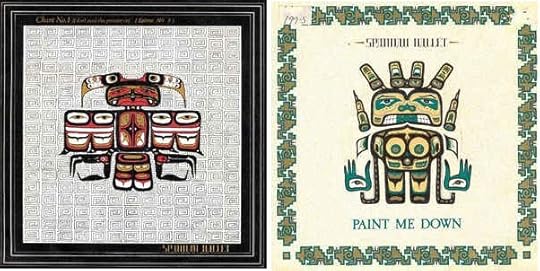 By 1981, the new wave movement was in full swing with bands like The Cure, Depeche Mode, and New Order. More chameleon-like was Spandau Ballet. Spandau, featuring the Kemp Brothers, Gary and Martin, and the voice of Tony Hadley were the stars of the "Cult With No Name" and New Romantic scene with their first LP Journeys to Glory and the hits, "The Freeze," and "To Cut a Long Story Short." The New Romantics also included Steve Strange, Ultravox, and Duran Duran. What's interesting about Spandau Ballet is the gasoline fire in which the band evolved. As soon as Journeys to Glory was released, Spandau Ballet abandoned the New Romantic look and went for a more elegant take in GQ-like style. Their 2nd LP, Diamond, in this writer's opinion their best, would take the No-Name Cult sound and tribalize it with the excellent dance hits "Paint Me Down" and "Chant No. 1" which became extremely popular 12-inch singles in 1982 and the steady beat of every new wave dance club from Manchester to L.A.While Peter Saville's LP and record covers were elegant in a graphic arts style, Spandau adopted a neo-classical theme early on, and then, as can be seen in the graphics, took on a look that fit the pseudo-tribal beat of the singles. I simply adore that Alaskan totem look.By 1983, the band would opt for a sophisto-Hollywood look and release their triumphant LP True, which would become an international bestseller featuring the title track, a worldwide No. 1 smash, "Lifeline" and "Gold." With the LP, the band was capitalizing on its pop sheen, leaving the new wave arena behind. In 1984, Spandau Ballet released Parade with its hit "Only When You Leave,"
By 1981, the new wave movement was in full swing with bands like The Cure, Depeche Mode, and New Order. More chameleon-like was Spandau Ballet. Spandau, featuring the Kemp Brothers, Gary and Martin, and the voice of Tony Hadley were the stars of the "Cult With No Name" and New Romantic scene with their first LP Journeys to Glory and the hits, "The Freeze," and "To Cut a Long Story Short." The New Romantics also included Steve Strange, Ultravox, and Duran Duran. What's interesting about Spandau Ballet is the gasoline fire in which the band evolved. As soon as Journeys to Glory was released, Spandau Ballet abandoned the New Romantic look and went for a more elegant take in GQ-like style. Their 2nd LP, Diamond, in this writer's opinion their best, would take the No-Name Cult sound and tribalize it with the excellent dance hits "Paint Me Down" and "Chant No. 1" which became extremely popular 12-inch singles in 1982 and the steady beat of every new wave dance club from Manchester to L.A.While Peter Saville's LP and record covers were elegant in a graphic arts style, Spandau adopted a neo-classical theme early on, and then, as can be seen in the graphics, took on a look that fit the pseudo-tribal beat of the singles. I simply adore that Alaskan totem look.By 1983, the band would opt for a sophisto-Hollywood look and release their triumphant LP True, which would become an international bestseller featuring the title track, a worldwide No. 1 smash, "Lifeline" and "Gold." With the LP, the band was capitalizing on its pop sheen, leaving the new wave arena behind. In 1984, Spandau Ballet released Parade with its hit "Only When You Leave,"but the band had flown too close to the sun.Alongside other new wave pop bands like Haircut One Hundred and ABC, for a brief moment, the funk/jazz scene was all the rage with Spandau in the spotlight.
Published on May 10, 2021 04:38
May 8, 2021
Pet Shop Boys - 40 Years Ago
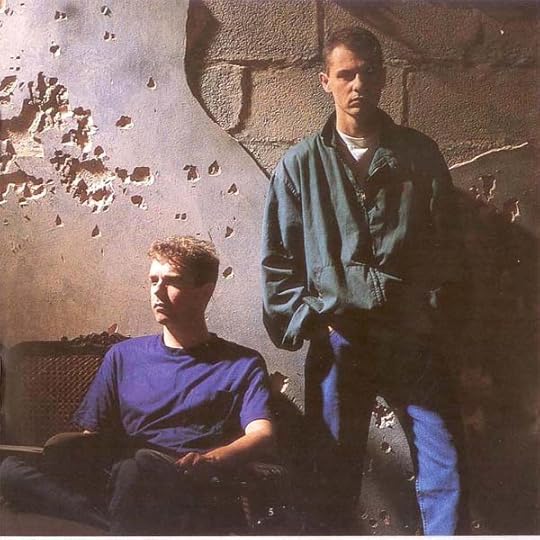
While the 80s are unabashedly danceable (even The Smiths were danceable – of course, I dance around to Pink Floyd), the social commentary that was expected from bands like The Clash was overlooked with New Order, Pet Shop Boys, and the new wave ilk. But Pet Shop Boys were/are far more than two unassuming British gentlemen; they have a political/social voice that coincidentally has an EDM beat, all with a sense of the literary. Funny that their first and still most popular hit, "West End Girls," was based on TS Eliot's epic poem, The Wasteland and "Jealousy" reflects Iago from Othello: "Not poppy nor mandragora/ Nor all the drowsy syrups of the world/ Shall ever medicine thee to that sweet sleep/ Which thou owedst yesterday" [Shakespeare, Othello Act 3 Scene 3 line 333].By Fundamental, they'd attack Blair and Bush on "I'm With Stupid," a song sung from the perspective of someone chasing an idiotic lover as Tennant wonders "Is stupid really stupid, or a different kind of smart?" From homophobia to prejudice, Pet Shop Boys were the most beat-oriented social commentators of the 80s.
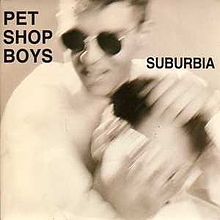 Neil Tennant was born on July 10, 1954, in Northumberland. A quiet, studious type with a strong inclination toward the arts and history, and early on learned guitar and cello. While in his teens he wrote a one-act play that was performed in a local arts festival. Having earned in 1975 a degree in history from the Polytechnic Institute of North London, Neil worked for the U.K. branch of Marvel Comics, where he Anglicized the spellings, performed small bits of censorship to accommodate British standards, and inserted advertisements. Later, of course, he held a now-legendary stint as an assistant editor for the pop-music magazine Smash Hits.Christopher Sean Lowe was born on October 4, 1959, in Blackpool to a musical family. He learned to play piano at ten, as well as his father's favorite instrument, the trombone. As a child attending Arnold House School, Chris enjoyed "designing houses" as a hobby and subsequently studied architecture at Liverpool University. During the early 1980s, he worked in the toy department at Harrod's department store.The pair happened upon each other in a London record shop on King's Road in 1981 and talked about music and synthesizers. They kept in touch and soon became friends and musical collaborators, writing songs together in Neil's apartment. Among the songs they wrote in this early period were "Bubadubadubadum," "Oh, Dear," "I Can't Say Goodnight," and "Jealousy." In 1982 they made their first demo tape in a studio they rented for £6 per hour. Deciding that they needed a name, they decided to call themselves West End, ultimately renaming themselves Pet Shop Boys after friends who, you guessed it, owned a pet shop.One of their signature hits "Opportunities," has made a comeback based on the awful TV commercial for Allstate. The song is superficially about stupid-money excess, down to its chorus "I've got the brains, you’ve got the looks/Let’s make lots of money." In fact, it was an icy satire on dehumanization and greed and ended with the lyric "All the love that we had, and the love that we hide/ Who will bury us when we die?" Danceable commentary – gotta love it.
Neil Tennant was born on July 10, 1954, in Northumberland. A quiet, studious type with a strong inclination toward the arts and history, and early on learned guitar and cello. While in his teens he wrote a one-act play that was performed in a local arts festival. Having earned in 1975 a degree in history from the Polytechnic Institute of North London, Neil worked for the U.K. branch of Marvel Comics, where he Anglicized the spellings, performed small bits of censorship to accommodate British standards, and inserted advertisements. Later, of course, he held a now-legendary stint as an assistant editor for the pop-music magazine Smash Hits.Christopher Sean Lowe was born on October 4, 1959, in Blackpool to a musical family. He learned to play piano at ten, as well as his father's favorite instrument, the trombone. As a child attending Arnold House School, Chris enjoyed "designing houses" as a hobby and subsequently studied architecture at Liverpool University. During the early 1980s, he worked in the toy department at Harrod's department store.The pair happened upon each other in a London record shop on King's Road in 1981 and talked about music and synthesizers. They kept in touch and soon became friends and musical collaborators, writing songs together in Neil's apartment. Among the songs they wrote in this early period were "Bubadubadubadum," "Oh, Dear," "I Can't Say Goodnight," and "Jealousy." In 1982 they made their first demo tape in a studio they rented for £6 per hour. Deciding that they needed a name, they decided to call themselves West End, ultimately renaming themselves Pet Shop Boys after friends who, you guessed it, owned a pet shop.One of their signature hits "Opportunities," has made a comeback based on the awful TV commercial for Allstate. The song is superficially about stupid-money excess, down to its chorus "I've got the brains, you’ve got the looks/Let’s make lots of money." In fact, it was an icy satire on dehumanization and greed and ended with the lyric "All the love that we had, and the love that we hide/ Who will bury us when we die?" Danceable commentary – gotta love it.
Published on May 08, 2021 04:56
May 5, 2021
New Order’s Treaty on War – Fantin, and a Sad Country Song
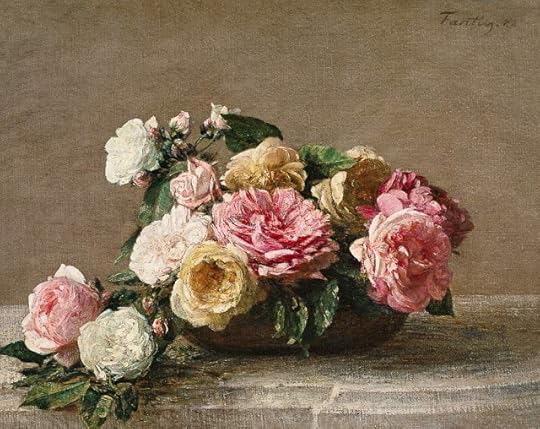
The 80s New Order catalog is sublime. From Movement's transition away from Ian Curtis in 1981 to Technique in 1989 (and even including 1993's Republic), the band was pure 80s with timeless style. In 1983, New Order's sublime Power, Corruption and Lies included my No. 1 track "Leave Me Alone" and, for those of us who bought the cassette (which is worth a fortune, BTW), "Blue Monday." Getting socially conscious, though, the album offered "We All Stand," an eerie anti-war/violence tome that sends shivers down one’s spine. Its construct is one of anticipation and a uniquely perceptive take on ground combat that includes ambiguity of a transcendent nature: At the front line is an unknown enemy soldier with the same “three miles to go” before their confrontation, and presumedly, one will kill the other:
Three miles to goThree miles to goAt the end of the roadThere's a soldier waiting for me
The texture of the instrumentation and the anxious yet unsuspecting mood of the unknown soldier is as dramatic as an introspective film. The suspense is heightened by Stephen Morris's penetrating percussion underpinning Peter Hook's bassline as Gillian and Sumner weave their brooding melodies.
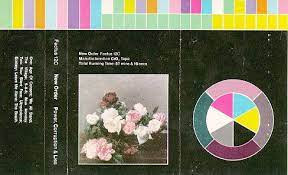 In 1985, the band would pick up the war theme on the LP Low Life with the stand-out single "Love Vigilantes." While the track's subtlety is solidly anti-war, what's created instead is a country song in spirit, a story of ghostlike ambiance in which a wife receives a government letter stating that her husband has been killed in the war, only for the husband to appear at the door. Some interpret this as a mistake on the part of the letter, others instead, more accurately, interpret that the narrator is there only in spirit and has not yet recognized his own death. It's a very different approach for New Order who nixed the electronica for a more straightforward rock song that features the melodica played by Sumner, Hook's ever-present bass, and a rhythm guitar. Sumner describes the track as a "very country tragedy." Both songs make a convincing point in very different ways; each extolls NO’s ability to cut through the expectations.
In 1985, the band would pick up the war theme on the LP Low Life with the stand-out single "Love Vigilantes." While the track's subtlety is solidly anti-war, what's created instead is a country song in spirit, a story of ghostlike ambiance in which a wife receives a government letter stating that her husband has been killed in the war, only for the husband to appear at the door. Some interpret this as a mistake on the part of the letter, others instead, more accurately, interpret that the narrator is there only in spirit and has not yet recognized his own death. It's a very different approach for New Order who nixed the electronica for a more straightforward rock song that features the melodica played by Sumner, Hook's ever-present bass, and a rhythm guitar. Sumner describes the track as a "very country tragedy." Both songs make a convincing point in very different ways; each extolls NO’s ability to cut through the expectations.
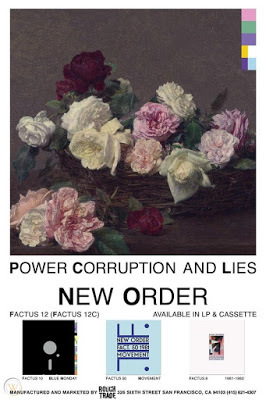
The cover art for PC&L is by Peter Saville from a painting by Henri Fantin-Latour from the late 19th century. Fantin studied each flower, each petal, its grain, its tissue as if it were a human face. In Fantin’s flowers, the drawing is large and beautiful, sure and incisive; it is an individual flower and not simply one of a type. Add to that Saville’s graphics sensibility and you have one of the most iconic LP covers of the 80s.
Initially, Saville, figured he needed the portrait of a dark and renaissance-styled prince, but only because he was watching The Borgias at the time. Instead, at the National Gallery in London, he found a postcard featuring the painting "A Basket of Roses"
by Fantin-Latour. His girlfriend (name unknown) joked that he should use this as his cover. The National Gallery, however, refused to let Factory Records use it. Tony Wilson, head of Factory, went to the gallery director and had a memorable talk in which the gallery made an exception and allowed Factory Records the painting. Peter Saville put his code on the top corner and the iconic cover was complete.
Published on May 05, 2021 04:33
May 4, 2021
Joy New Division Order - 40 Years Ago
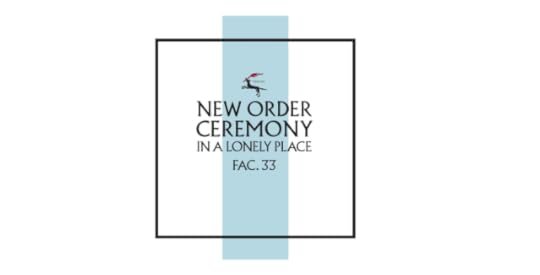
There were two New Orders in 1981, the post-Joy Division version which hadn't yet come from out of the shadows of Ian Curtis, and the new New Order that evolved into my favorite band of the 80s. I love both versions, with Movement still high on my list, particularly "Doubts Even Here," and "Chosen Time." While Movement was a transitional LP, in many ways, so was its follow-up, Factus 8, sometimes called 1981-1982. While the latter was clearly New Order, the EP demarcates the point where NO shed Martin Hannett, one of the 80s finest producers, and the producer of both Closer and Unknown Pleasures. Hannett produced three of the EP's tracks, "Everything’s Gone Green," "Procession" and "Mesh," that while leaning in a new direction, were still leftover from JD days. The other tracks, which fill side 2, "Temptation" and "Hurt," were pure New Order, produced by the band. Interestingly, at about the same time, New Order released their first single, "Ceremony," b/w "In a Lonely Place," released as Fac.33, which were actually Joy Division tracks recorded just prior to the death of Ian Curtis. New Order would re-record the tracks with Bernard Sumner on vocals. Sumner could only approximate the lyrics and improvised on "Ceremony" since Curtis had not written them out and his recordings were typically garbled.It's interesting to look back and decipher the evolution that took place from Joy Division through New Order pre-"Blue Monday" in 1983. While I revere JD, it's NO who would become the band that I most admired in a time when there were so many. Today I listen to Depeche Mode equally and Pet Shop Boys more (a band my wife and I share as one of our faves), but it was New Order that I followed more closely and listened to more intently. By Power, Corruption and Lies and Brotherhood, I was (Peter) Hooked.
Published on May 04, 2021 05:51
May 3, 2021
Atmosphere
 A frightening video went viral on Twitter a year or so back, a creepy black and white version of the U.K. children's program Teletubbies. Spawned by a leaked black and white photo, the mash-up video of Joy Division's "Atmoshere" is from Christopher G. Brown, and it just works. It's more frightening than the original and you'll never think of La La and Po the same way again - indeed, watch the video and ruin your childhood. Teletubbies in black and white are the 10th circle of hell. Click here, if you dare.
A frightening video went viral on Twitter a year or so back, a creepy black and white version of the U.K. children's program Teletubbies. Spawned by a leaked black and white photo, the mash-up video of Joy Division's "Atmoshere" is from Christopher G. Brown, and it just works. It's more frightening than the original and you'll never think of La La and Po the same way again - indeed, watch the video and ruin your childhood. Teletubbies in black and white are the 10th circle of hell. Click here, if you dare.
Published on May 03, 2021 06:02
May 2, 2021
Leave Me Alone

In AM's 80s pilgrimage, Peter Saville, of course, leads us to New Order. His cover art for Power, Corruption and Lies is among the most iconic ever created. Recently I listed my favorite pop singles, from "Bennie and the Jets" to "Ventura Highway." My radio faves are far from my intrinsic ones (I love them nonetheless). But, now that we're on to New Order, I can truly say that my favorite all-time 100% most favorite-ist track is NO's "Leave Me Alone." My unfinished novel, Lady Jane, about a has-been pop star from the 60s, uses NO’s song title as a fictitious hit for Lady Jane, circa 1967. Just a bit of a tribute to a song that for 40 years now, along with Peter Gabriel's "Humdrum" and Pet Shop Boys' "It Couldn't Happen Here," has been in constant rotation on my turntable.Playing Anton Corbijn a little (DM’s Strange video), I decided to create a short film for my favorite 80s track – so here you go… (Here's the link: Leave Me Alone)
Published on May 02, 2021 06:07



